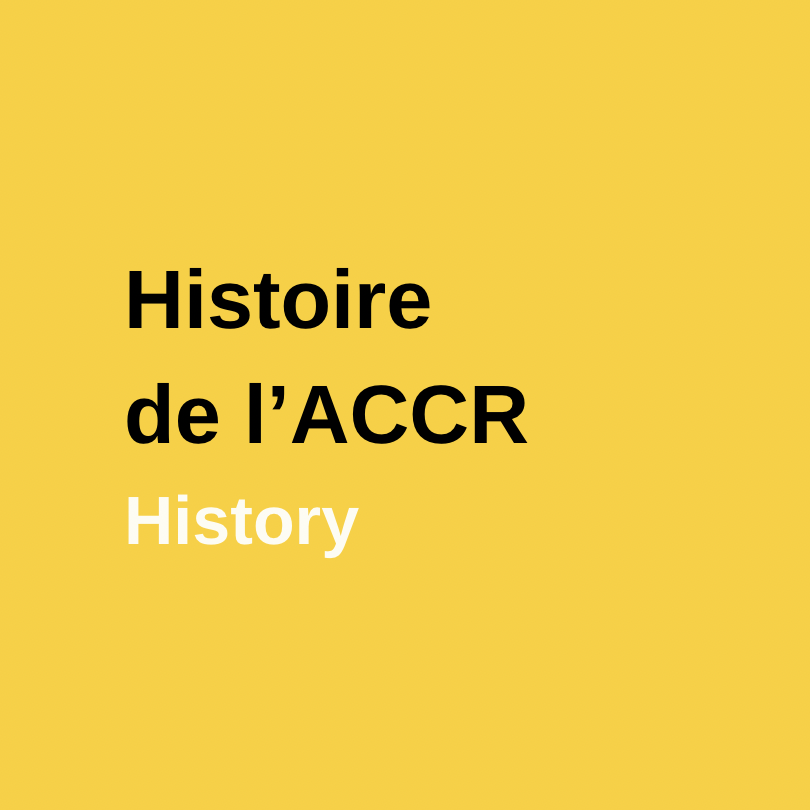The Association of Cultural Encounter Centres (ACCR) brings together a large network of 30 French members in addition to around 20 from the rest of the world. The network first emerged in the 1970s, when five heritage sites decided to work together to raise awareness of heritage re-use.
/ A civil society initiative
The Heritage Sites for Culture (CCRs) were founded in 1972 on the initiative of five iconic French heritage sites: the Saline d’Arc-et-Senans, the Fondation Royaumont, the Centre d’échanges contemporains in Saint-Maximin, the Amis de Sénanque and Les Prémontrés. The project was supported by Jean Salusse, director of the Caisse des Monuments Historiques, the then Minister of Culture Jacques Duhamel, and his colleague Jacques Rigaud.
/ Towards a state-owned label
Following a phase of experimentation in the 1970s and 1980s, the creation of the European network and the subsequent Charter of Cultural Encounter Centres in 1992 gave the association legitimacy and power. On 14th August 1995, the ACCR filed a patent for the label “Centre Culturel de Rencontre” (CCR) with the French National Institute of Industrial Property (INPI).
From the beginning of the 1980s, the Ministry of Culture considered these heritage sites as important tools for cultural development in rural and suburban areas as well as in medium-sized towns. CCRS helped to revitalise the local area, encouraging artistic and cultural creativity, research and innovation while also promoting French heritage and attracting tourism to these areas.
In 1992 Jack Lang, the then Minister of Culture and Communication, countersigned the Charter of Cultural Encounter Centres. In 1996, the label “CCR” was handed to the State by the ACCR. It was decided that the awarding of the label would be subject to a favourable assessment by the National Commission of Cultural Encounter Centres (CNCCR), under the aegis of the Ministry of Culture, and including the president of the ACCR as an ex-officio member. In 1998, the Trautmann Circular reinforced the original positioning of Cultural Encounter Centres in public policy, as well as the role of the ACCR.
In the 2000s, the Ministry of Culture gave further support to the label through artist residency programmes within the CCRs, such as the 2003 Odyssée programme aimed at foreign artists, researchers and culture professionals. The State has also allocated funding to the ACCR at times of natural or humanitarian crises, including Haiti, New Orleans and in 2016 the NORA programme for refugee artists and researchers. Finally, the Ministry of Culture supports the network in its European and international development.
In 2016, the label “Centre Culturel de Rencontre” became part of the July 2016 law regarding creation, architecture and heritage. In March 2017, the label officially became the property of the French state. As a result, the Charter for Centres culturels de rencontre no longer applies. Its award conditions are defined by decree no. 2017-434 of 28 March 2017. To find out more, you can consult this document or refer to the Ministry of Culture website.
/ The birth of a European and global network
The European network began in 1991 as an informal grouping which incorporated around ten centres from Belgium, France and Portugal. The bringing together of diverse European heritage sites responded to a need to explore the issue of uniting heritage and creativity and the interdisciplinarity this necessitates.
The primary mission of the network is to work together to develop and communicate the concept of the re-use of monuments. The network aims to increase opportunities, examine ways of working, and support new projects in a spirit of exchange and cooperation. The network is a hub of resources and reflection, undertaking studies, organising symposiums and distributing publications.
The European Orientation Council was created in 2001 to bring together within the same informal governance structure the activities of the network’s French, European and international members.
From 2010, the ACCR undertook to develop the network outside Europe, with the support of the Ministry of Culture and the Ministry of Foreign Affairs. The Association has implemented a coordinated international development strategy, and the network now has members in Quebec (since 2000), Brazil and Australia. In China, a cooperation protocol was signed in 2015 allowing the integration of two centres into the network – the Nantong 1895 Cultural and Creative Industry Park and the Television-Radio Group of Wuxi. The network has also welcomed the International Cultural Centre of John Smith in Benin.
For European and international sites, the ACCR is responsible for monitoring applications and awarding the label.
/ Change in the association's articles of association
Following the general meeting in May 2023, the association changed its articles of association and is now made up of active members and associate members. Active members hold the ‘Centre culturel de rencontre’ label governed by decree no. 0207-434 of 28 March 2017 as amended. Associate members are any individual or non-profit-making legal entity based in a historic monument or an outstanding natural or architectural site, or involved in promoting and revitalising intangible heritage, in France or abroad, with the same objectives as the Centres culturels de rencontre. They are approved by the Board of Directors, by a two-thirds majority.

